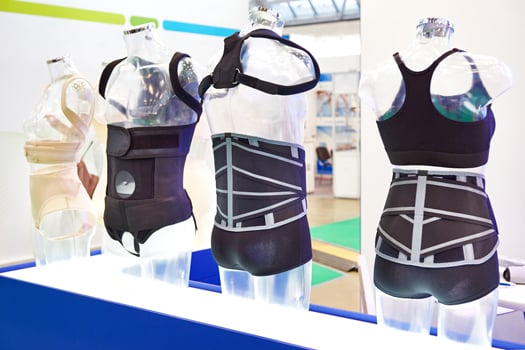
A back brace provides added support for a healing spine. This can also include the time after having a microdiscectomy. While a back brace is not specifically required in many instances, some patients do benefit from using them. This article explains what you need to keep in mind when it comes to using a back brace after microdiscectomy surgery.
Post-Surgery Discomfort Levels
A microdiscectomy is a minimally invasive procedure, meaning there is not much disruption to nearby tissues, unlike what is often the case with a traditional discectomy. Oftentimes, this means any resulting discomfort is not too much of an inconvenience beyond the first few weeks. In this instance, you may not need to bother with a back brace for added support.
With that said, some patients have mild to moderate discomfort following a microdiscectomy. If you begin to experience more significant discomfort, you may prefer to wear a back brace for added support while going up and down stairs and making similar movements. Your doctor may also recommend a back brace if you have preexisting issues with chronic pain from other sources or bone and joint disorders that can make certain movements painful during microdiscectomy recovery.
Soft Braces
Back braces come in a variety of sizes and styles. A soft corset lumbar support brace is typically recommended if the doctor believes a back brace may be necessary for the patient. This is a brace that still allows for natural movements when walking and going about regular routines. These types of braces are also more comfortable for most patients.
Pros and Cons of Back Braces Post-Microdiscectomy
Generally, there is nothing wrong with wearing a back brace after microdiscectomy surgery as long as it is being worn correctly. The main benefits of wearing a back brace include:
• Maintaining correct posture
• Easing pressure on a healing spinal disc
• Reducing the risk of making certain movements that trigger muscle spasms or pain spikes
If the doctor has recommended a back brace, it is typically worn during the first 4–6 weeks after a microdiscectomy procedure. Initially, you may be advised to wear the brace if you will be out of bed for more than 15 minutes. After 4–6 weeks, you may be encouraged to gradually reduce the amount of time you wear the brace each day until you no longer need it.
The only drawback is that the brace could be worn incorrectly or fit a little too tightly around the surgical site. However, your physical therapist or doctor can help you avoid mistakes like this. It is equally important to stick to your schedule for using the brace.
Wearing a Brace for Other Reasons
A back brace may also be helpful in reducing the risk of reinjury as you increase your activity level. This can also be the case as you get back to work, especially if you have a more physically demanding job.
Even though microdiscectomy surgery is a common and generally quite successful procedure, a hole is frequently left in the outer wall of the disc. In fact, patients with these large holes in their discs are more than twice as likely to reinjure themselves by having what is known as a reherniation. These reherniations often require additional back surgery or even fusions. Fortunately, there is a new treatment specifically designed to close the large holes that are often left in spinal discs after discectomy surgery. Barricaid is a bone-anchored device proven to reduce reherniations, and 95 percent of Barricaid patients did not undergo a reoperation due to reherniation in a 2-year study timeframe. This treatment is done immediately following the discectomy—during the same operation—and does not require any additional incisions or time in the hospital.
If you have any questions about the Barricaid treatment or how to get access to Barricaid, ask your doctor or contact us at 844-288-7474.
For full benefit/risk information, please visit: https://www.barricaid.com/instructions.


Comments